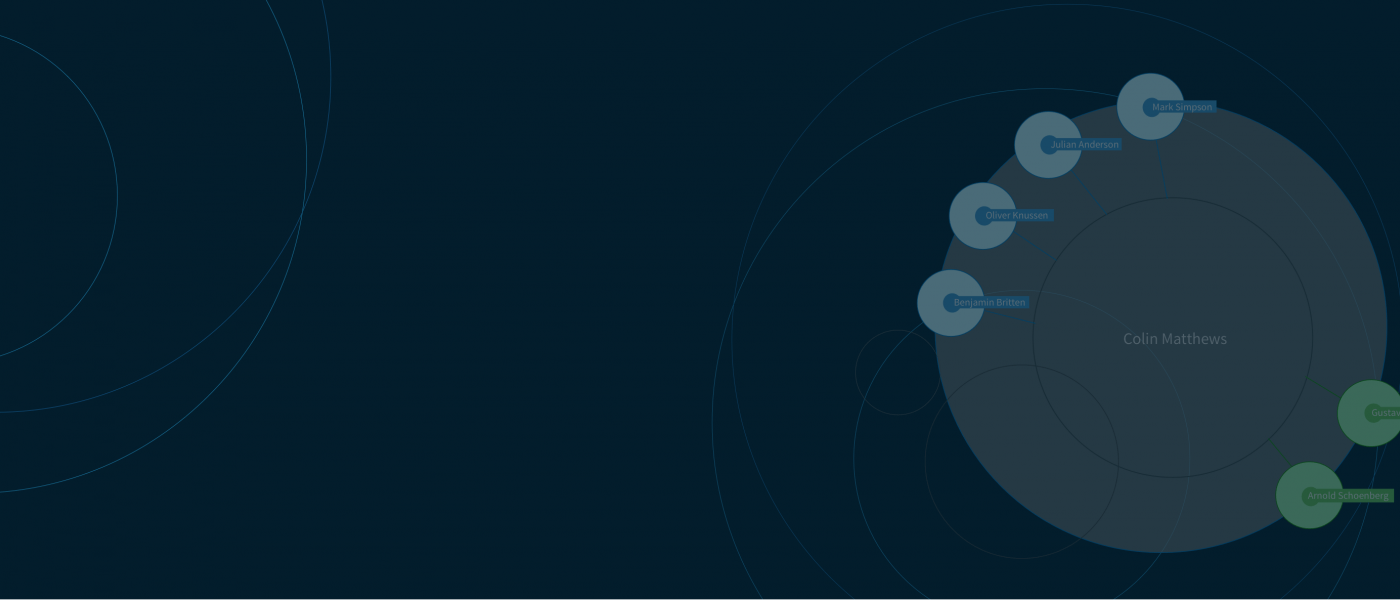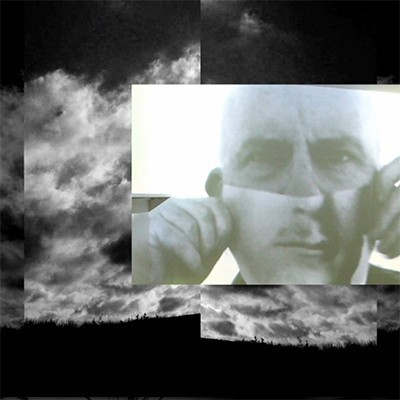Jim Aitchison
Jim Aitchison is a composer and artist, working both in the realm of responding to visual artworks and in that of making visual responses to music. His most recent work focuses upon mind and state.
As a composer, he has worked in response to a range of internationally important visual artists including Gerhard Richter, Antony Gormley, Doris Salcedo, Anthony Caro, Peter Randall-Page, Mark Rothko, Anish Kapoor, Richard Deacon, Terry Frost, Bridget Riley and John Hoyland, with various Galleries such as Tate Modern, Tate St Ives, the RA, The Henry Moore Institute, and The New Art Centre at Roche Court. From 2008 - 2014 this work occurred in the context of 2 research fellowships at the Royal Academy of Music. In 2008/9, Tate Modern commissioned the composer to respond in music to their large scale Rothko show, and in 2014 he created a large scale response to art by Gerhard Richter with distanced and distributed music performed simultaneously at a variety of geographical locations across the UK. In 2015 he was Composer-Researcher for the ‘Online Orchestra’ project at Falmouth University funded by the Arts and Humanities Research Council, and in 2017 The New Art Centre at Roche Court Sculpture Park supported by the Heritage Lottery Fund commissioned ‘Sea of Music’ in response to Sir Anthony Caro’s ‘Sea Music’ sculpture in Poole Harbour in Dorset, with the Bournemouth Symphony Orchestra. Most recently, in 2020, The Social Distancing Festival based in Toronto showed the composer’s first foray into film with music: Contrapunctus grew out of a 4-year project on the effects of disconnection and isolation upon the mind and the making of art. Michael Morris, Co-Director of Art Angel described Contrapunctus thus: “This absorbing and prescient piece, in which form and content are beautifully combined, speaks powerfully to the constant human struggle for integration.”
His music has been released on the NMC label, and his music after Mark Rothko is available for visitors to experience in the Rothko Room at Tate Modern as part of the gallery multimedia tour, and on the TATE Channel.
Jim Aitchison is a composer and artist, working both in the realm of responding to visual artworks and in that of making visual responses to music. His most recent work focuses upon mind and state.
As a composer, he has worked in response to a range of internationally important visual artists including Gerhard Richter, Antony Gormley, Doris Salcedo, Anthony Caro, Peter Randall-Page, Mark Rothko, Anish Kapoor, Richard Deacon, Terry Frost, Bridget Riley and John Hoyland, with various Galleries such as Tate Modern, Tate St Ives, the RA, The Henry Moore Institute, and The New Art Centre at Roche Court. From 2008 - 2014 this work occurred in the context of 2 research fellowships at the Royal Academy of Music. In 2008/9, Tate Modern commissioned the composer to respond in music to their large scale Rothko show, and in 2014 he created a large scale response to art by Gerhard Richter with distanced and distributed music performed simultaneously at a variety of geographical locations across the UK. In 2015 he was Composer-Researcher for the ‘Online Orchestra’ project at Falmouth University funded by the Arts and Humanities Research Council, and in 2017 The New Art Centre at Roche Court Sculpture Park supported by the Heritage Lottery Fund commissioned ‘Sea of Music’ in response to Sir Anthony Caro’s ‘Sea Music’ sculpture in Poole Harbour in Dorset, with the Bournemouth Symphony Orchestra. Most recently, in 2020, The Social Distancing Festival based in Toronto showed the composer’s first foray into film with music: Contrapunctus grew out of a 4-year project on the effects of disconnection and isolation upon the mind and the making of art. Michael Morris, Co-Director of Art Angel described Contrapunctus thus: “This absorbing and prescient piece, in which form and content are beautifully combined, speaks powerfully to the constant human struggle for integration.”
His music has been released on the NMC label, and his music after Mark Rothko is available for visitors to experience in the Rothko Room at Tate Modern as part of the gallery multimedia tour, and on the TATE Channel.
Compilations with this composer
CompilationsRelated composers
Related composersExternal Links
Music Map
Discover more about the classical music of today with NMC's Music Map, and exciting and educational online tool which enables you to see and hear the connections between composers, their teachers, pupils, influences and their works.
Music Map

